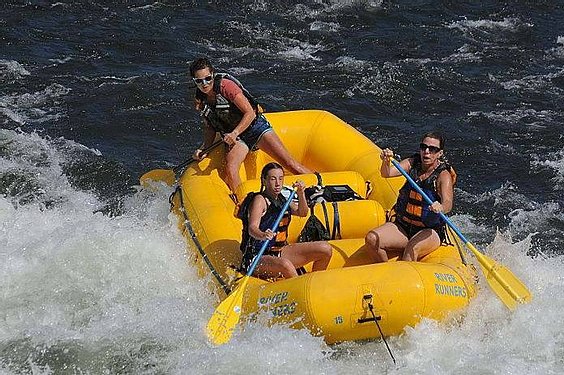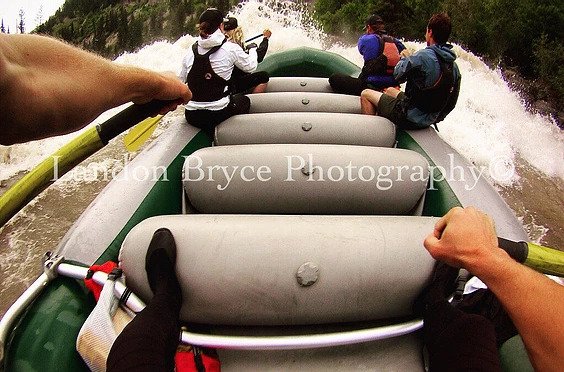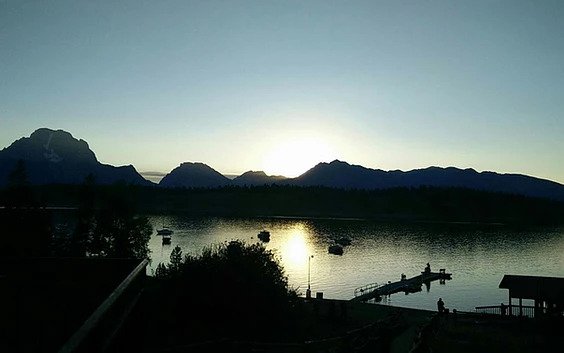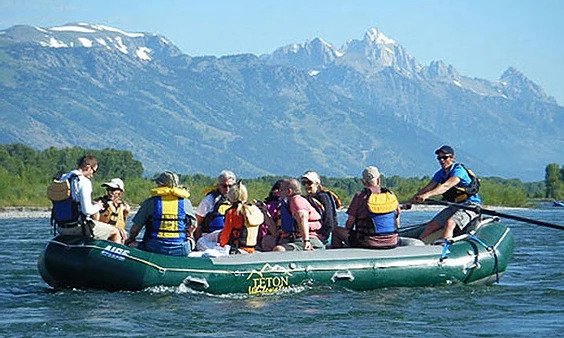

The first time I ever went rafting was eight years ago on the Tully River in Queensland Australia. It is class V and we went five days in a row. I had no idea what I was doing.
The man who was my guide is now my husband. We had met a couple of months prior and were traveling around my home country of Australia together. He is a Californian river guide and convinced me to go whitewater rafting with him. I had never even seen a rapid until then. I remember being scared, really curious and completely exhilarated by the experience. The strangest thing was that I was pretty relaxed, more so than I am now when I raft on class V rivers!
Since then I have gone on to become a river guide and now even run my own rafting company in Jackson Hole, Wyoming. Being on the river was so alluring. The smells, the sounds, the absence of distraction. It is just so easy to be present in those moments out there. It is such a real experience. Just you, your crew, a raft, paddles and the untamed beauty and power of nature.
Most people don’t get to go on a river five days in a row. Especially for their first experience. So one of the challenges of being a whitewater raft guide who mostly takes folks on single/two day river trips is adequately preparing my guests so that they can make the most of their adventure.
Otherwise, it is over by the time they settle in! I really like to focus on helping them get every little bit of joy out of the experience so that it radiates within them for many days to come.
Whitewater Rafting Tips
Here are some tips I have learned:
Go ALL IN
Sign up for the trip that is long enough to challenge you. Everyone has different thresholds, for some of you an hour trip may be enough to get out of your comfort zone, for others a whole day, over-nighter, or multi-day trip may be necessary. Whatever you do, sign up for a trip that is long enough to get you a little out of your comfort zone and then commit fully to doing it. Participate by paddling as well as you can, go for a swim, skip a rock or jump off a rock into the water (if it is safe to do so), relax and enjoy your trip as much as you can.
Be easy to be around
I learned this from a colleague who is currently in his 40th year of raft guiding. He always includes a lengthy segment on this in his safety talk. Rafting is a communal event, be helpful to those around you, smile, chat, make new friends. It only makes the trip better!
Take photos, not phone calls
At first it seems to make sense to bring your phone for pictures, but not only are you risking losing it, you are also risking being that person whose phone is ringing when everyone else is trying to be out in nature listening to things other than obnoxious ringtones!
A cheap digital camera is the way to go if you want to take happy snaps. Be sure to have a lanyard attached to it and clip it in the top buckle of your life jacket, that way it is always at your disposal and is less likely to end up in the drink.
If you have a GoPro, make sure you have a helmet mount and ask the company you are rafting with if they have a helmet with the attachment point on it. Where I work helmets are not usually required, but we always have some GoPro helmets around so you can get some hands free footage. Don’t be that guy holding onto your GoPro all day instead of paddling!
Trust your guide with all the safety stuff
I don’t need to tell you all the safety stuff here because your guide should have your back. Every commercial rafting trip starts with a ‘safety talk’. You will be given the appropriate river safety gear, a life jacket (pfd) and a helmet if it is required. Helmets are usually only required on class IV and over.
Guides are trained to take care of you, so trust that they have your best interests at heart!
Raft light, raft smart
The last thing a guide wants to see is a guest who turns up with a giant back pack or dry bag full of stuff! Less is more on the river, if there are things you need to bring on the raft like water, sun block, etc., ask your guide where you can put those things.
In addition, dress appropriately for your trip. In hot weather, comfort and protection from the sun is really important. A long sleeve cotton shirt can help protect you from the sun as can a pair of leggings. In cool or cold weather, cotton should always be avoided as it stays cold when it gets wet. Synthetic fleece and wool are the way to go in cold weather. The best shoes to wear are a pair of running shoes that lace up or secure sandals like Chacos or Tevas. Flip flops are a no no and almost always end up floating away!
The most important thing to bring is your courage. Rafting wouldn’t be exciting without that sense of danger. Put on a brave face, trust your guide and plunge yourself deep into the cool wet rivers of this amazing country. You won’t regret it!
River Runners
This blog brought to by Sarah Vee (Vardaro) with River Runners. River Runners is a rafting company located in Lotus, California. It was established in 1947 and incorporated in 1981 by a group of people who loved the river, rafting and sharing the experience with others.


